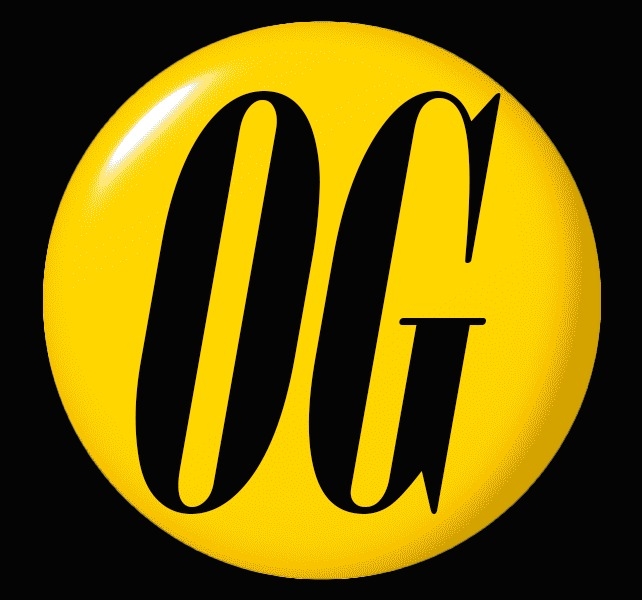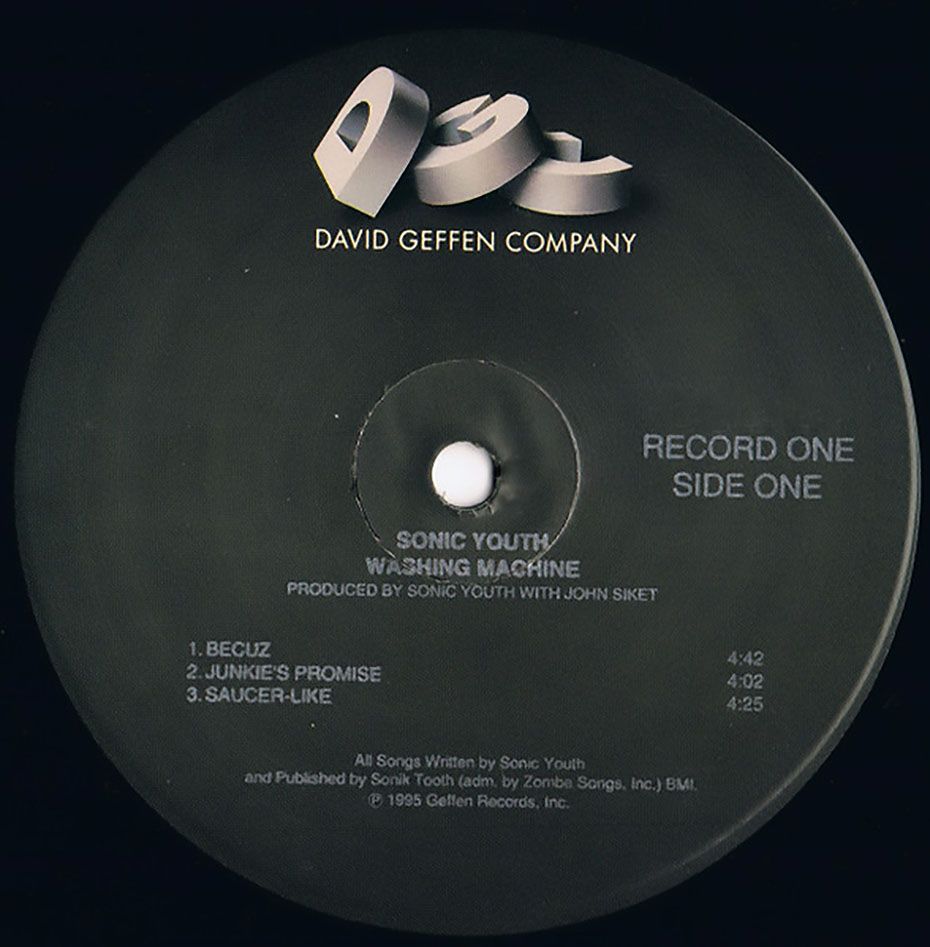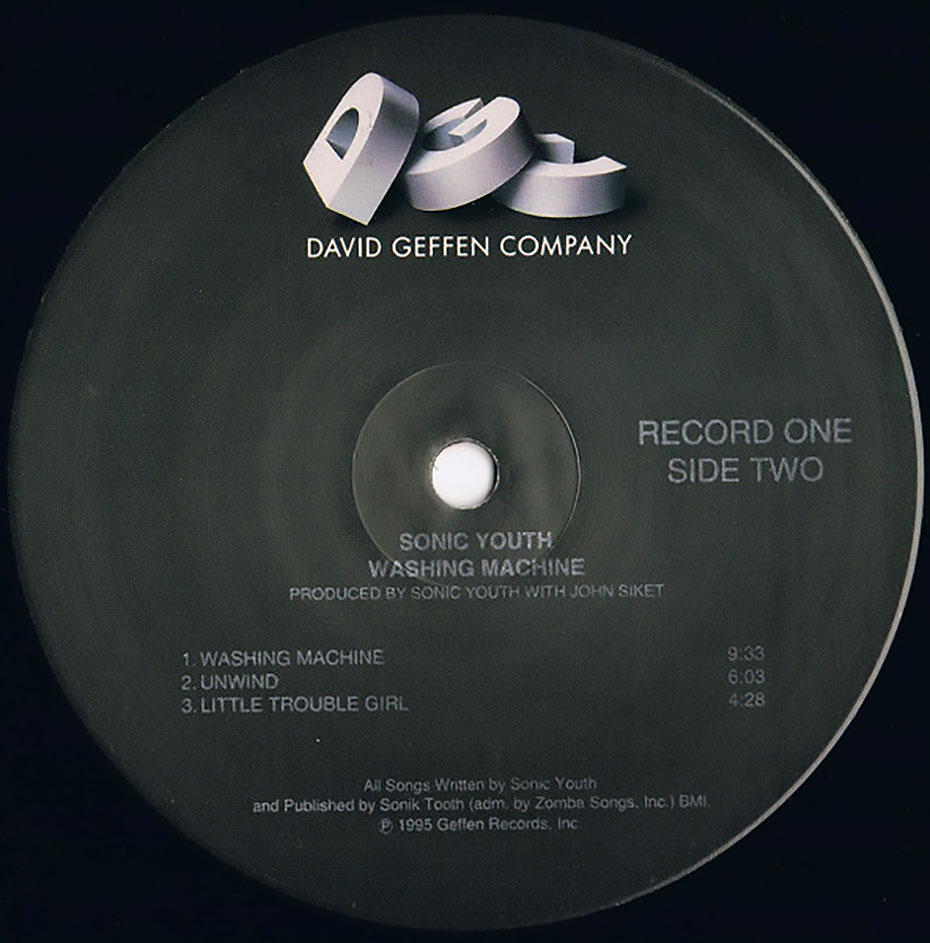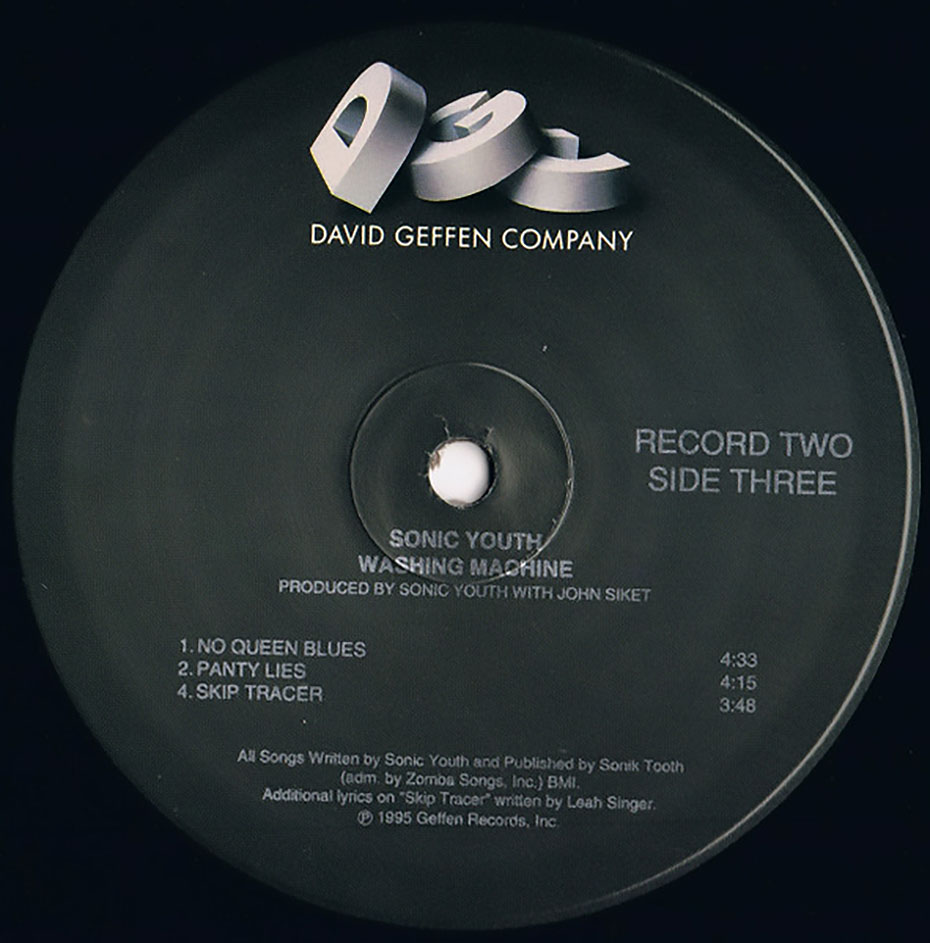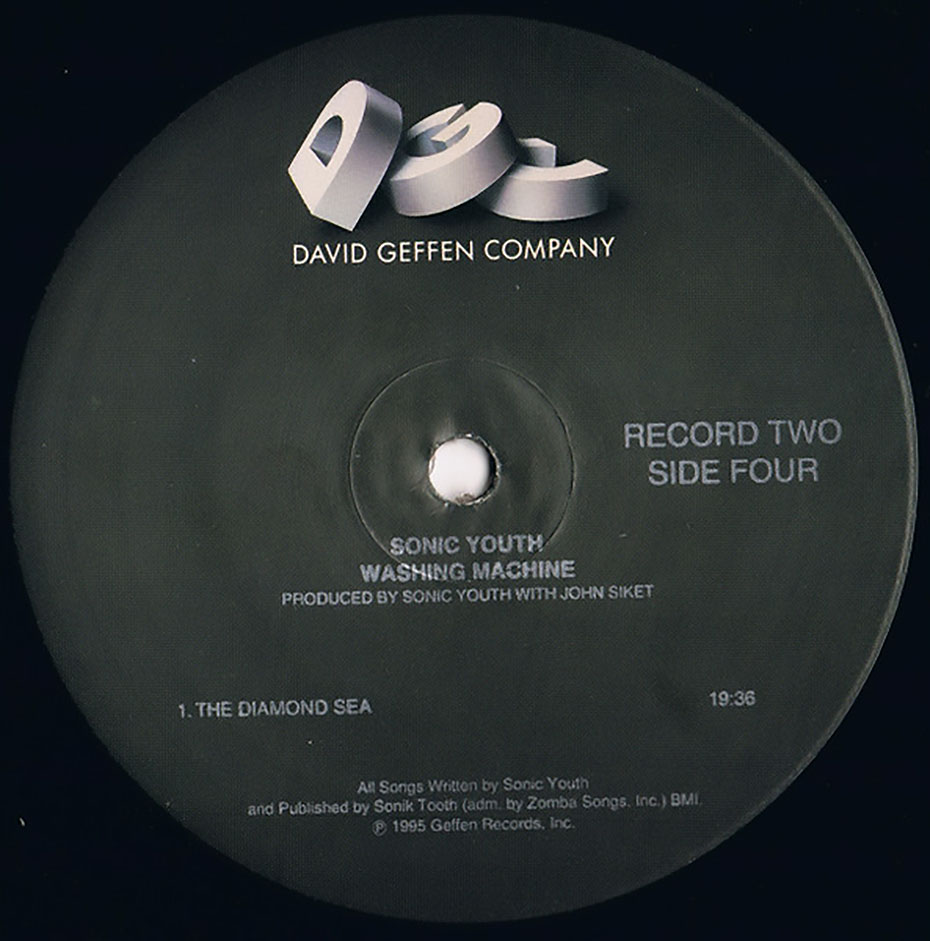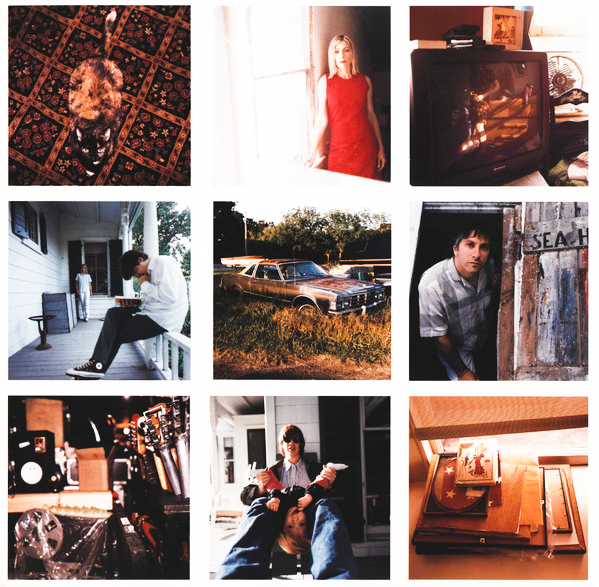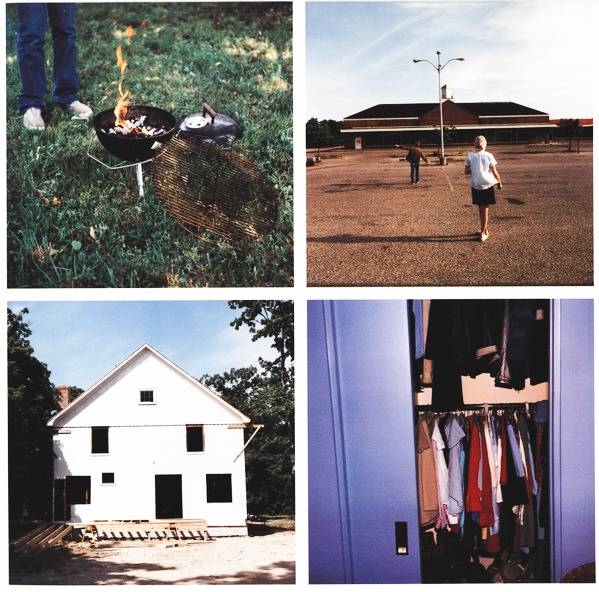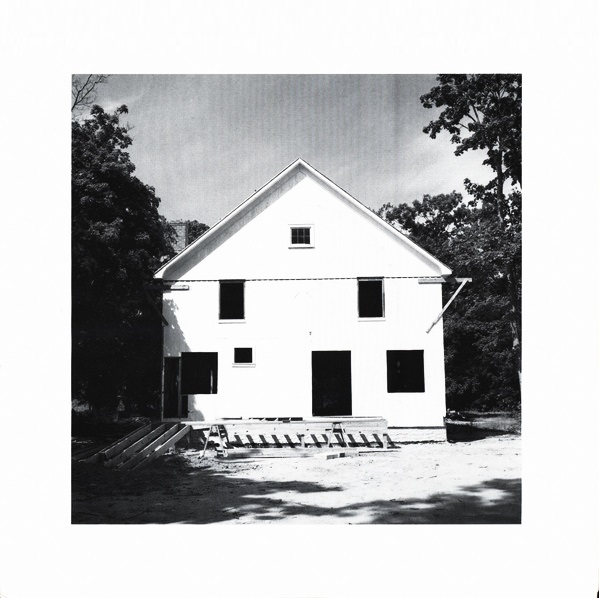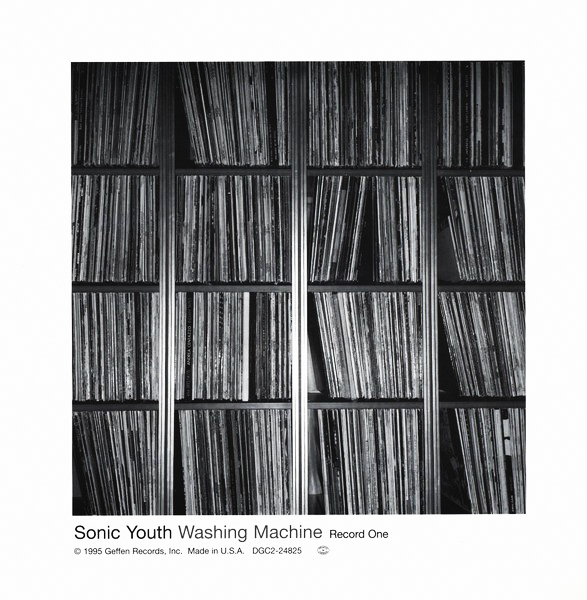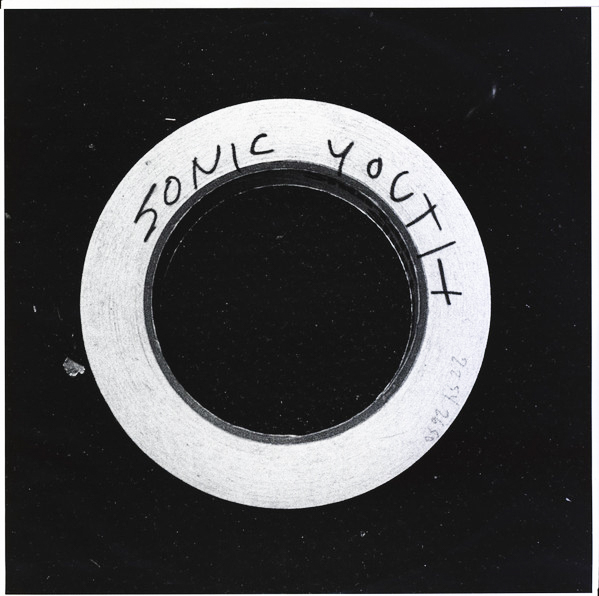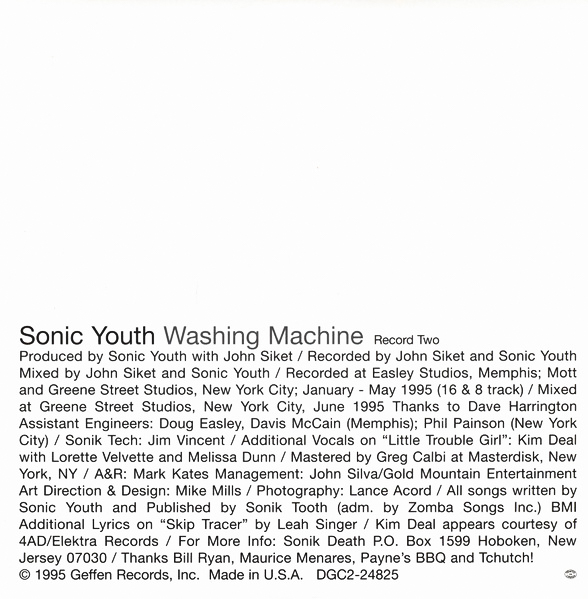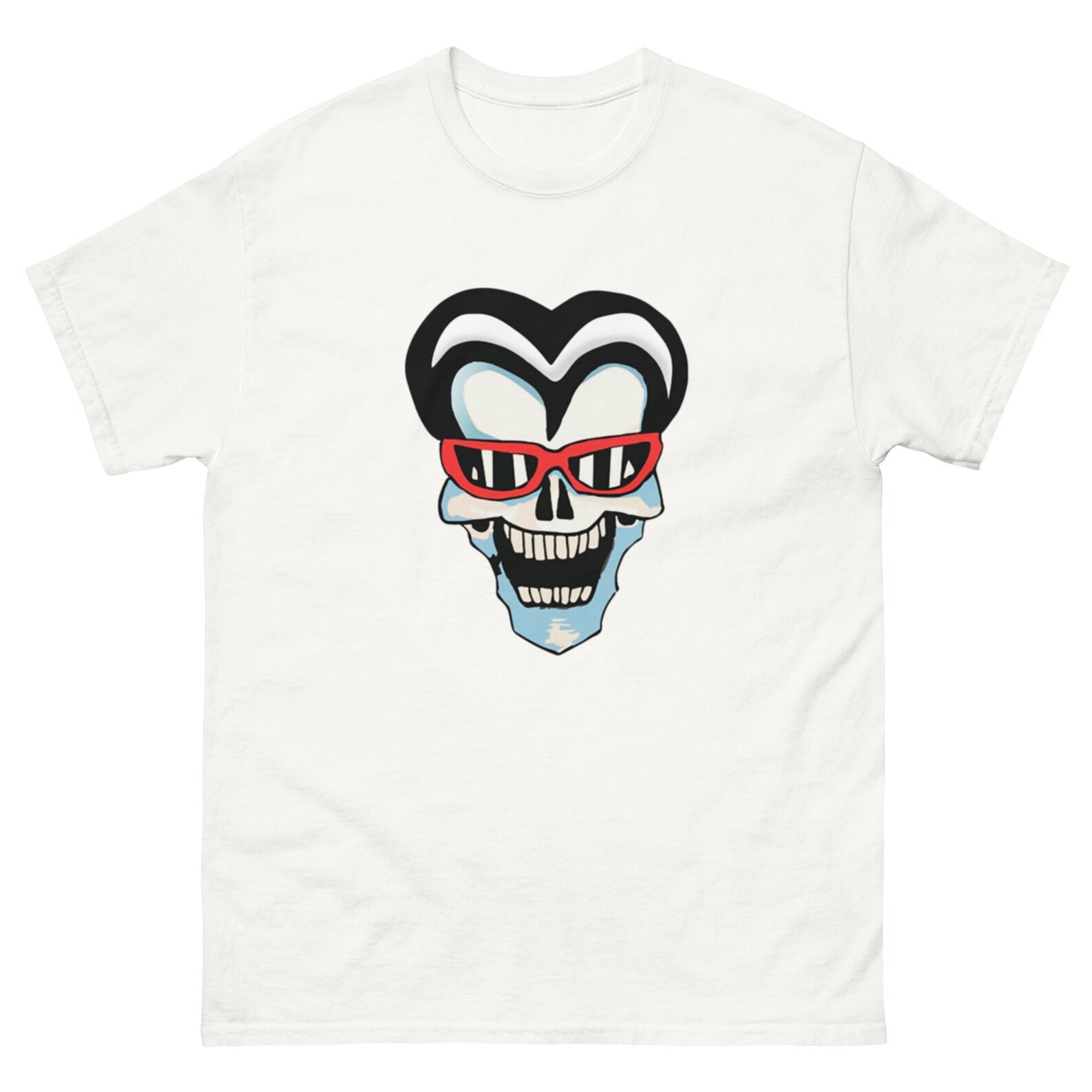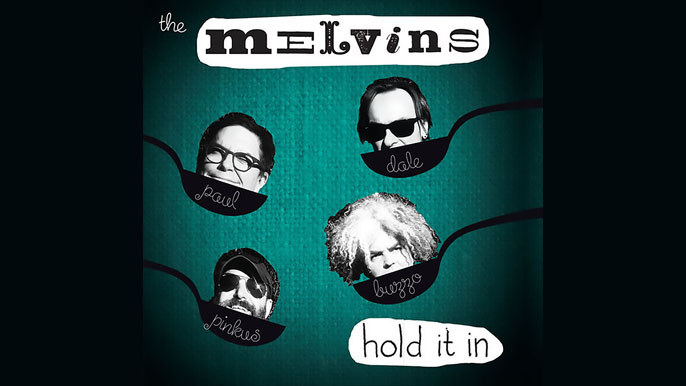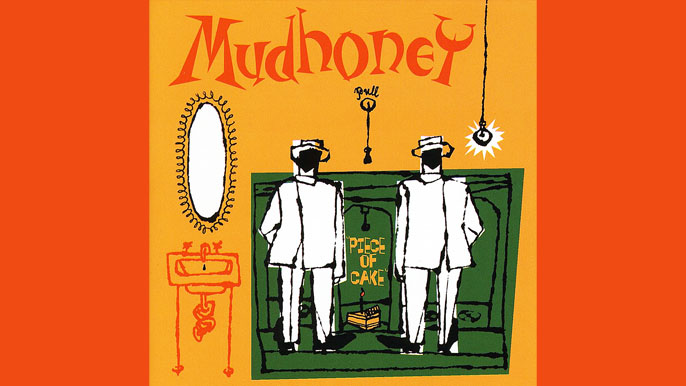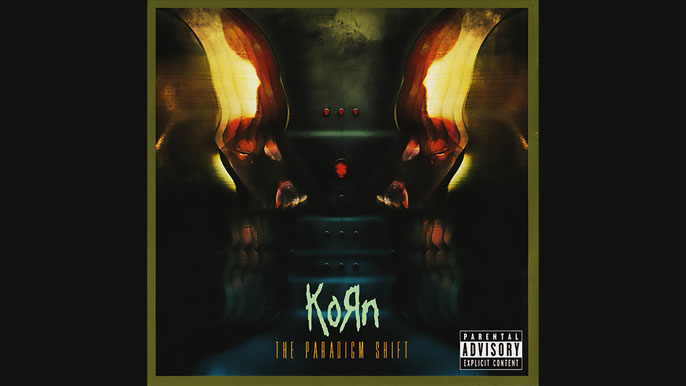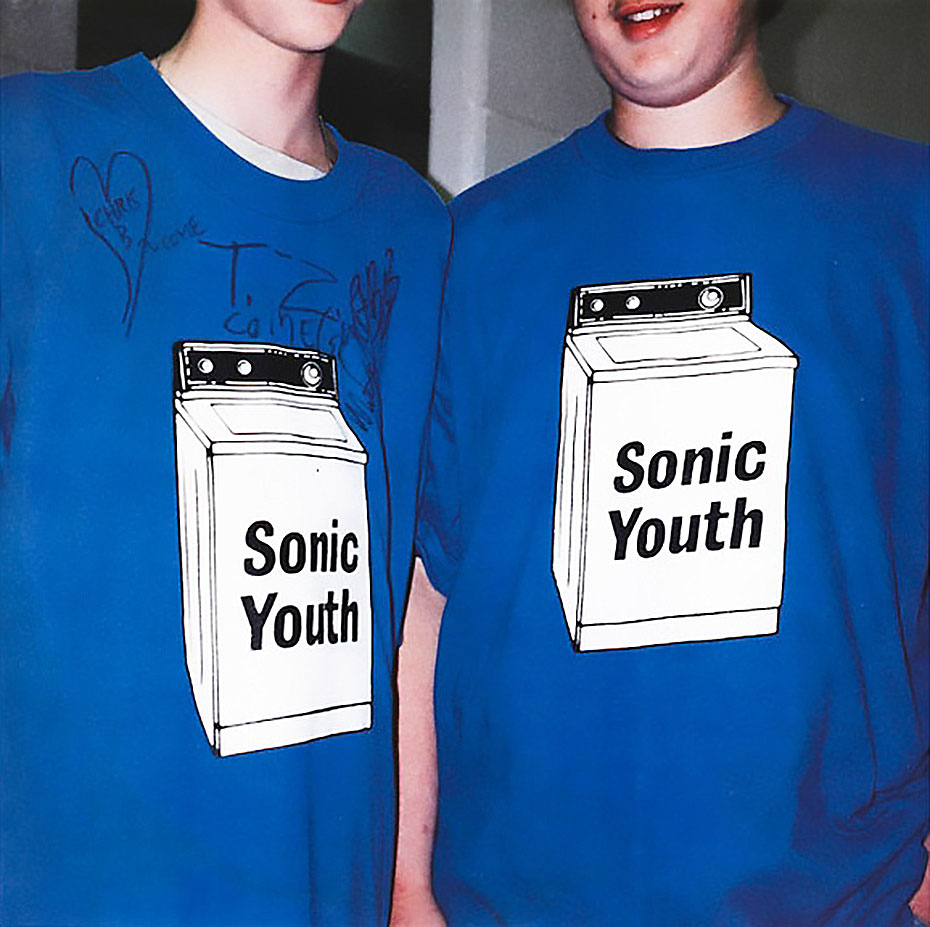
Washing Machine is the ninth studio album by Sonic Youth, released on September 26, 1995, by DGC Records. It was recorded at Easley Studios in Memphis, Tennessee, and produced by the band and John Siket, who also engineered the band’s previous two albums.
The album features more open-ended pieces than its predecessors and contains some of the band’s longest songs, including the 20-minute ballad “The Diamond Sea”, which is the lengthiest track to feature on any of Sonic Youth‘s studio albums.
Released shortly after the band concluded their stint headlining the 1995 Lollapalooza music festival, Washing Machine reached No. 58 on the US Billboard 200 chart and No. 39 on the UK Albums Chart. Two songs from the album, “The Diamond Sea” and “Little Trouble Girl”, were released as singles.
The album received generally positive reviews from music critics, who praised the band for exploring new challenges as well as the guitar playing of band members Thurston Moore and Lee Ranaldo.
The album cover consists of a cropped Polaroid photograph of two unidentified fans taken at a Sonic Youth show in Amherst, Massachusetts, in April 1995, during a short tour undertaken while the album was still in production.
The fans are depicted wearing T-shirts that were sold as merchandise during that tour; early in 1995, the band was toying with the idea of changing their name to Washing Machine. Visible on the shirt on the left are signatures by Thalia Zedek and Chris Brokaw of the tour’s opening band Come.
The photo was taken by Gordon, who believed it could be used as the album cover. The band liked the shot, but the record label did not want to use it without permission from the fans. Because the band did not have any way to contact them, their faces had to be cropped out.
During the festival Lollapalooza 1995, the band previewed some tracks from the album in addition to playing several songs from Daydream Nation, Dirty, and Experimental Jet Set. In Germany, the record was also released with a bonus disc containing four live songs that were recorded in Paris on September 12, 1995. Two singles and music videos for “The Diamond Sea” and “Little Trouble Girl” were released in 1995 and 1996 respectively. As of 2005, the album had sold 159,000 copies in the US according to Nielsen SoundScan.
Tracklist:
SIDE ONE
- Becuz
- Junkie’s Promise
- Saucer-Like
SIDE TWO
- Washing Machine
- Unwind
- Little Trouble Girl Vocals: Kim Deal, Lorette Velvette, Melissa Dunn
- No Queen Blues
SIDE THREE
- Panty Lies
- Becuz Coda
- Skip Tracer (Lyrics by Leah Singer, Additional)
SIDE FOUR
- The Diamond Sea
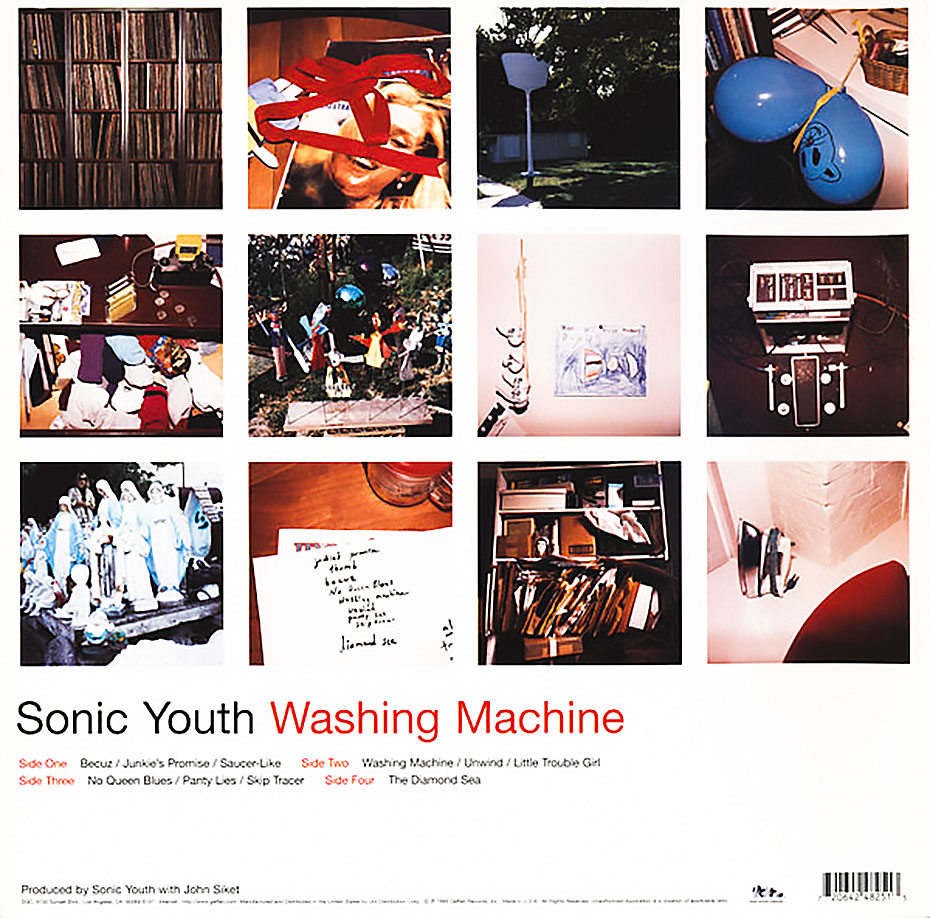
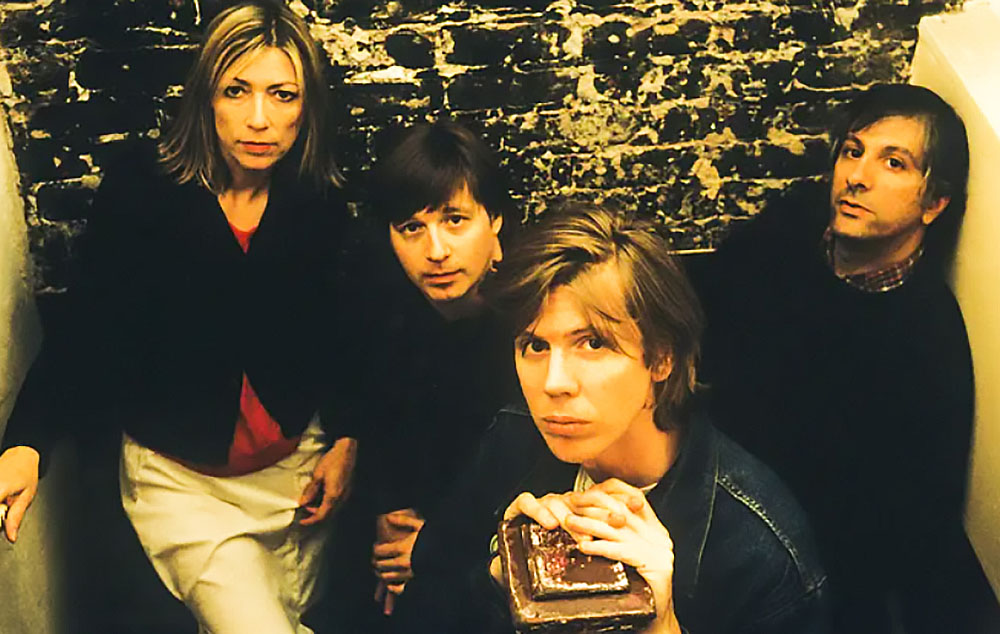
Sonic Youth
Thurston Moore: vocals, guitar, production
Kim Gordon: vocals, guitar, bass (8, 10, 11), production
Lee Ranaldo: vocals, guitar, production
Steve Shelley: drums, production
Additional musicians
Kim Deal: additional vocals on “Little Trouble Girl”
Lorette Velvette: additional vocals on “Little Trouble Girl”
Melissa Dunn: additional vocals on “Little Trouble Girl”
Technical personnel
John Siket: production, recording, mixing
Davis McCain: engineering assistance
Doug Easley: engineering assistance
Phil Painson: engineering assistance
Greg Calbi: mastering
Mike Mills: art direction
Lance Acord: photography
